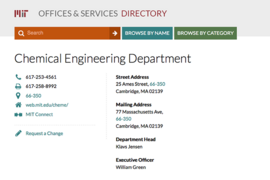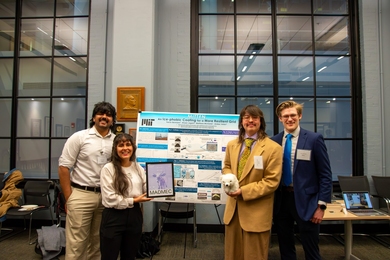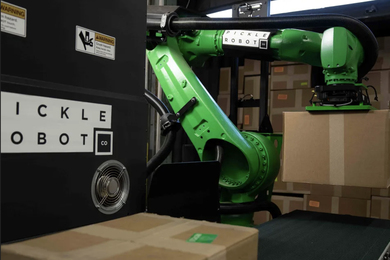It's been said that 42 is the "Answer to The Ultimate Question of Life, the Universe, and Everything." Code42 makes no such claims, but it does make CrashPlan. And this may be just the answer you’re looking for when your desktop crashes or your laptop goes missing.
CrashPlan is MIT’s new cloud-based backup solution for desktops and laptops, replacing IBM Tivoli Storage Manager (TSM, Basic and Standard). The favorite in an MIT pilot that tested four backup services, CrashPlan has also been chosen by a number of MIT’s peer institutions that previously used TSM.
TSM Enterprise is still the solution of choice for servers. Information Systems & Technology will continue to use it to back up its own servers and recommends it for those on campus with particularly large data sets.
The icing on the cake: MIT is offering CrashPlan at no charge to members of the community. TSM Enterprise will also be offered free of charge. This is part of an ongoing effort to eliminate chargebacks and enhance services.
Roadmap for the Rollout
IS&T has already been using CrashPlan in some of its areas, including Operations & Infrastructure and Customer Support. The rollout will continue over the next year:
- July and August 2014: IS&T will engage directly with targeted departments, labs, and center (DLCs) in their transition to CrashPlan. Other DLCs can request to be added to this list by sending mail to cp-support@mit.edu. Early adopters will be able download CrashPlan from the IS&T Software Grid in July.
- September 2014 and beyond: IS&T will help remaining TSM desktop and laptop users make the switch, and will also assist members of the community who have not been using TSM but are interested in a cloud backup service.
- June 2015: All TSM Basic and Standard service level accounts will be retired.
Motives for the Move
Three factors influenced IS&T’s move to CrashPlan. Based on customer feedback, IS&T understood that the end user experience could be improved. TSM’s interface is appropriate for desktop support providers in a managed environment, but isn’t straightforward for end users — especially those using Mac OS X. The CrashPlan interface is streamlined and easier to use.
This is also the era of cloud-based services; the timing was right to explore services beyond IS&T’s Data Center. This is especially true as users create and store more and larger files than ever before. It is important to note, however, that CrashPlan is intended for the backup of endpoint devices (desktops and laptops) with datasets in the single terabyte (TB) range.
A third factor in the move to CrashPlan was cost. Code42 has offered MIT competitive pricing through the Internet2 Net+ initiative.
CrashPlan Basics
Unlike TSM, CrashPlan accounts are tied to a user, not a device. You can back up as many as four devices under your account. These backups aren’t restricted to MIT-owned equipment. If you have a CrashPlan account and want to back up personal data from home, you’re welcome to do so as long as you’re comfortable with the fact that the CrashPlan encryption keys are held by staff in the IS&T Data Center.
CrashPlan backups are housed in a Code42 Data Center. Data is encrypted when in transit and is also stored in an encrypted format.
Based on both MIT’s contract with Code42 and the on-campus storage of encryption keys, CrashPlan is an acceptable backup option for those who handle sensitive MIT data or information regulated by FERPA or Massachusetts data privacy laws.
To learn more about CrashPlan, see IS&T’s Backup page and the CrashPlan FAQ in the Knowledge Base. This FAQ will be updated as more information becomes available.








